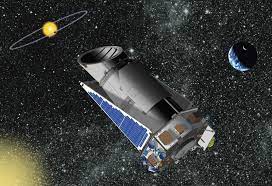NASA’s James Webb Telescope Discovers Potential Water Ocean on Exoplanet K2-18 b
NASA’s James Webb Telescope has unveiled a groundbreaking discovery—an exoplanet named K2-18 b, located 120 light-years away in the constellation Leo, may host a water ocean and exhibit potential signals of life. This revelation marks a significant milestone in our exploration of the cosmos and the quest for extraterrestrial life.
Exploring the Exoplanetary Ocean World
Promising Findings
The James Webb Telescope’s observations have provided compelling evidence of a probable water ocean on K2-18 b, sparking excitement among astronomers and scientists. Additionally, the presence of dimethyl sulfide (DMS), a substance associated with life on Earth, has been hinted at in the exoplanet’s atmosphere.
Expanding Our Cosmic Knowledge
This discovery builds upon earlier research conducted by NASA’s Hubble and Kepler telescopes, shedding new light on the mysteries of the universe. While the exoplanet is simply known as “K2-18 b” for now, its potential significance in the search for alien life is profound. With a mass approximately nine times that of Earth, K2-18 b belongs to the Hycean class of exoplanets, characterized by hydrogen-rich atmospheres and vast water-covered surfaces.
Deciphering K2-18’s Atmosphere
Signs of an Ocean World
K2-18’s atmosphere has captivated scientists due to its high methane and carbon dioxide levels and low ammonia content. These attributes strongly suggest that the exoplanet is an ocean world with a hydrogen-rich atmosphere. The detection of dimethyl sulfide (DMS) in its atmosphere, a compound associated with life on Earth, adds further intrigue to this discovery. Future James Webb Telescope missions may confirm the presence of significant DMS on K2-18 b.

The Habitability Factor
Important Considerations
While this finding has generated immense interest, it’s essential to note that it does not conclusively establish K2-18’s habitability. As emphasized by Nikku Madhusudhan, the study’s lead author from the University of Cambridge, “Our findings underscore the importance of considering diverse habitable environments in the search for life elsewhere.”
Exploring K2-18 b with the James Webb Telescope
Within the Habitable Zone
K2-18 b orbits within the habitable zone, an area around a star where liquid water could exist. It possesses a thin, hydrogen-rich atmosphere and the possibility of a surface ocean, though a substantial high-pressure ice mantle akin to Neptune is likely present. However, extreme temperatures on the exoplanet might render its ocean inhospitable.
James Webb’s Remarkable Contribution
In 2015, NASA’s K2 mission first discovered K2-18 b, but it was the James Webb Telescope that delved deeper into the exoplanet’s characteristics, suggesting its status as an ocean world. The telescope’s expanded wavelength range and exceptional sensitivity enabled scientists to scrutinize a fraction of the star’s light as it traversed K2-18’s atmosphere.
FAQs about NASA’s Findings Point To Exoplanet Hosting Rare Water Ocean And Potential Life Signals
Q1: What is the significance of the James Webb Telescope’s discovery on K2-18 b?
A1: The telescope’s findings suggest the presence of a water ocean and potential life-related signals on the exoplanet, advancing our understanding of extraterrestrial life possibilities.
Q2: Is K2-18 b habitable for humans?
A2: While the discovery is intriguing, it does not confirm K2-18’s habitability, as extreme temperatures may render its ocean unsuitable for life as we know it.
Conclusion
As we commemorate one year of the James Webb Telescope’s remarkable journey into the cosmos, the discovery of a potential water ocean and life-related signals on K2-18 b adds to its legacy. This revelation reinforces our commitment to unraveling the enigmas of our vast and diverse universe.



